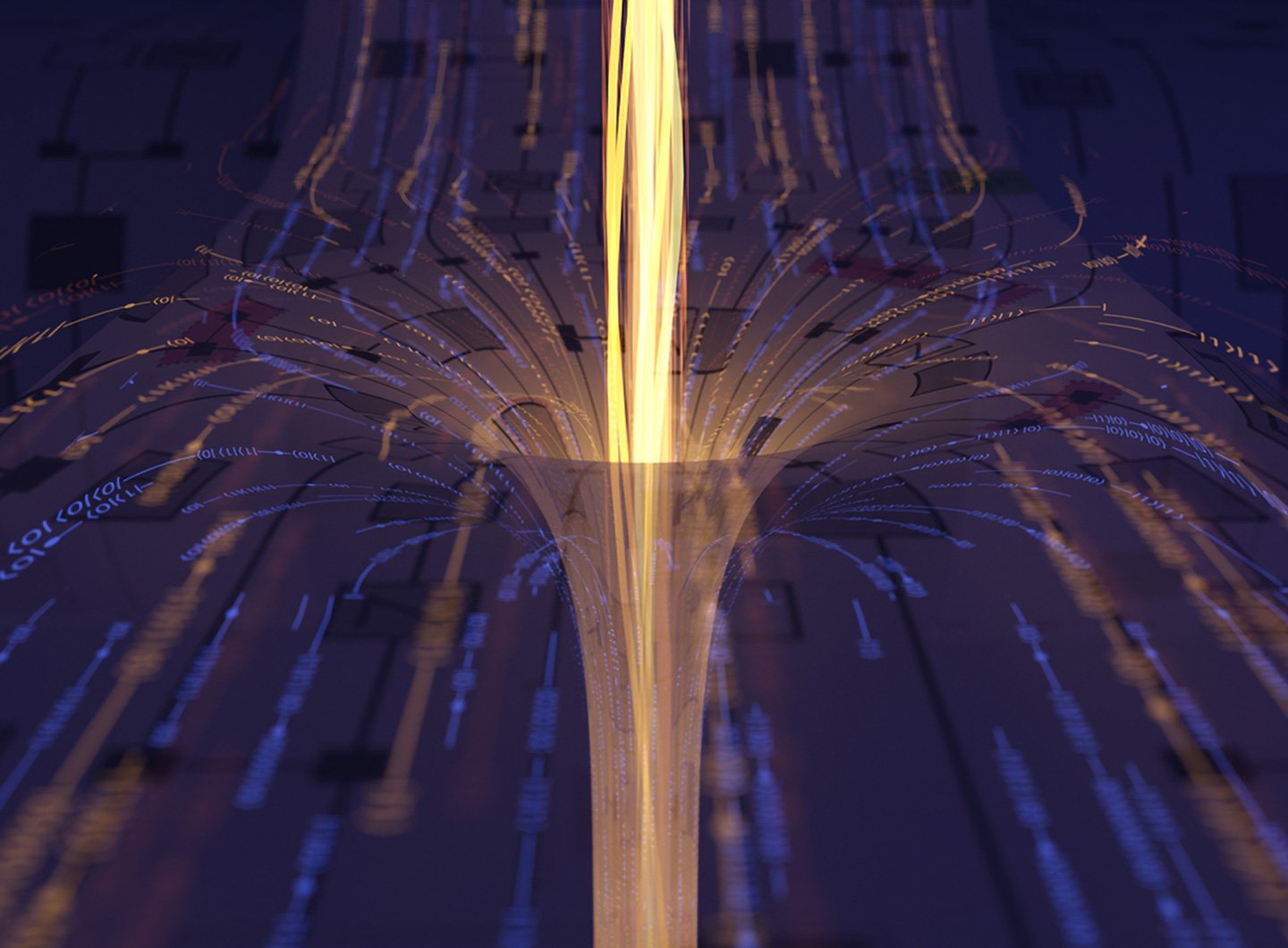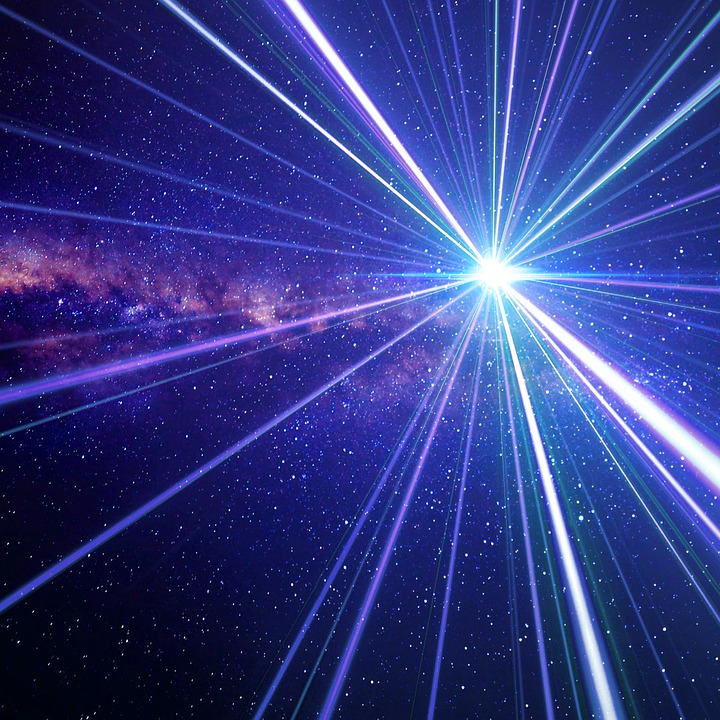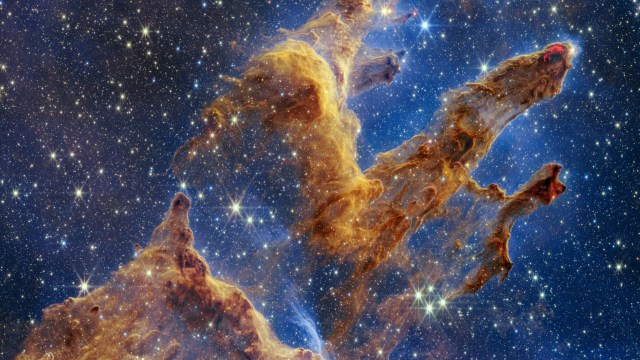Ask Ethan: What does ER=EPR really mean?

- In the 1930s, Albert Einstein and his student, Nathan Rosen, first formulated the possibility of what we commonly call a wormhole: an Einstein-Rosen bridge that connects two separate regions of space.
- On a completely different front, Einstein and Rosen, along with Boris Podolsky, coined what’s known as the EPR paradox: an important quantum puzzle that would lead to Bell’s theorem and many deep insights.
- Could those two phenomena, the Einstein-Rosen bridges and the EPR paradox concerning quantum entanglement, actually be related? If ER = EPR, it could profoundly change how we view the Universe.
Back in the 1930s, two seemingly unrelated revolutions were taking the world of physics by storm. Put forth in 1915, Einstein’s General Relativity reinterpreted gravity as the curvature of the fabric of spacetime, where the overall spatial curvature determines how matter and energy move through the Universe. Similarly, a new set of quantum rules were discovered to apply to a variety of physical systems, leading to a revolutionary, probabilistic picture of reality, rather than a deterministic one.
One advance in the 1930s came from Einstein working with his student Nathan Rosen, where they found a way to connect two well-separated regions of space via an Einstein-Rosen (ER) bridge: the earliest theoretical example of a wormhole. Another, seemingly unrelated advance came from Einstein, Rosen, and Boris Podolsky’s thoughts on quantum entanglement, leading to what’s known as the EPR paradox and an argument that quantum mechanics was incomplete. More recently, physicists have been exploring the ideas that these two thoughts are linked, commonly expressed as ER = EPR. But what does that truly mean? That’s what Ken Lapre wants to know, inquiring the following after watching this video:
“The part I got is the idea that quantum entanglement is related to wormholes. But I didn’t understand if each entanglement creates their own wormhole or if entanglement takes advantage of existing wormholes… Could you do a piece on the ER=EPR concept?”
Let’s first look at what each one is about, individually, before attempting to relate them and seeing what the latest rage is all about.

Before General Relativity came along, we traditionally viewed gravity as an “action-at-a-distance,” where two particles could be separated by any distance, but would instantaneously exert a force on one another: in proportion to both of their masses and inversely proportional to the square of the distance between them. This Newtonian picture held that gravity was instantaneous, and occurred between any two objects with mass instantly, from anywhere in the Universe.
What Einstein showed us is that even though the answers we get from the Newtonian picture are an excellent approximation to our reality under most circumstances (at large distances from masses and where gravitational fields are relatively weak), it’s fundamentally incorrect at describing what actually occurs in the Universe.
After all, what is it that defines the “distance” between two masses? Since each and every observer has their own unique motion through the Universe, where lengths are contracted (according to the laws of relativity) along their direction-of-motion, there is no notion of “absolute” distance. Additionally, there are no signals that propagate through space at speeds faster-than-light, implying that some sort of theory that put space and time on the same footing (i.e., spacetime) and that incorporated the rules of Einstein’s relativity was needed.

That’s where the inspiration for General Relativity came along, further motivated by what Einstein called “his happiest thought” of his entire life: the equivalence principle. Recognizing that gravitation was just one specific form of what one would experience as a more general “acceleration,” Einstein took the notion of spacetime and began the hard work of determining how the presence of matter and energy would distort and affect the fabric of space and, simultaneously, the passage of time. The end result, General Relativity, implied that matter and energy caused space to curve, and that curved space then told matter and energy how to move.
Over the years and decades, many interesting consequences were derived: gravitational redshift and time dilation, the existence and properties of black holes, the expanding Universe, and gravitational waves. In 1935, Einstein and his student, Nathan Rosen, published a paper where they demonstrated the feasibility of curving space in such a way that two disparate locations — separated by a great distance through space and time — could be connected by a bridge through severely curved space. Known as an Einstein-Rosen bridge, or “ER” for short, this later became synonymous with the notion of a wormhole, with theoretical consequences that are still being uncovered.

While our understanding of gravitation underwent a tremendous revolution in the first half of the 20th century, it’s arguable that our understanding of the Universe on the smallest scales experienced an even more profound coup: quantum physics. Instead of describing the Universe as being made of particles that have properties inherent to them, and then interact while moving through the fabric of spacetime, quantum physics taught us that only probabilistic sets-and-combinations of properties could ever be known. You can calculate the probabilities of a variety of possible outcomes, but it left us with two uncomfortable notions about our Universe that we were forced to live with: uncertainty and indeterminism.
Measure the position of your particle, for example, and you’ll get a measurement, but it won’t ever be exact; you can only know a particle’s position to some finite degree of accuracy. Moreover, the better you measure your particle’s position, the greater the associated uncertainty around what physicists call its “conjugate quantity,” momentum. The same is true for other conjugate variables, like angular position and angular momentum, intrinsic spin in mutually perpendicular directions, or inherent energy and the lifetime of your system.
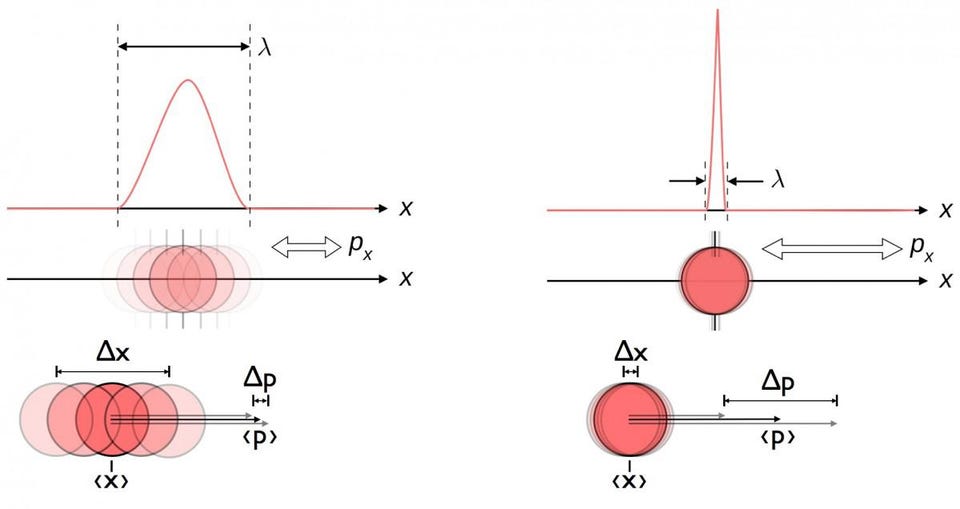
Additionally, this inherent uncertainty and indeterminism isn’t something that happens to lone, isolated quanta, but can affect composite systems. When multiple particles have their properties linked in an inherently quantum fashion, we call this quantum entanglement, and it means that the quantum state of each particle cannot be fully described without a quantum description of the other entangled particles as well. When the state of one member of a pair of entangled particles is measured, the state of the other member isn’t immediately determined, but it is immediately constrained: you instantly gain knowledge about it that’s superior to 50/50 guessing, or random chance.
In a brilliant paper also published in 1935, Einstein, Rosen, and Boris Podolsky devised what’s now known as the EPR Paradox. They argued that if two particles were entangled and separated, and then the position of one were measured exactly, then all of the uncertainty would be in the momentum, and hence the position of the other member could be immediately known. And yet, that would seem to violate the fundamental principle of relativity, as how could any knowledge of a faraway particle be obtained immediately if no information-carrying signal could be transmitted faster-than-light? This lead to the notion of hidden variables: that there were elements of reality that could not be detected, but that nonetheless existed, a hypothesis still being investigated today.

If “ER” is the notion that wormholes can exist, causally connecting two well-separated regions of space through a “bridge” that creates a short-cut, and “EPR” is the notion that two entangled particles could instantaneously pass information from one to the other, then the conjecture ER = EPR is the proposed connection of the two. Perhaps, as Leonard Susskind and Juan Maldacena first put forth in 2013, the reason that quantum entanglement occurs and exhibits the bizarre properties that we observe is because, at a deeper level of reality than we can perceive, entangled systems of particles are actually connected by an unseen wormhole.
This sounds like a wild idea that was simply conjured into existence by a vivid imagination, but like many wild ideas in physics that sound like they were made up by someone who’s eaten too many psychedelic mushrooms, there’s an extremely strong motivation for considering it seriously. One of the important notions in mathematics is that of “duality,” where a concept that applies to one system or set of conditions can be translated, in a one-to-one fashion, to an entirely different system that — at least on the surface — appears to be unrelated to the original.

The concept of duality most famously arises in string theory, where it was recognized (by Maldacena, back in 1997) that there’s a compelling mathematical relationship between:
- 5-dimensional anti-de Sitter spacetimes
- and 4-dimensional conformal field theories.
This sparked a tremendous interest in work on dualities in string theory, as this one particular duality, known as the AdS/CFT correspondence, might someday lead to identifying a “theory of everything,” where gravitation and the other three fundamental forces could be described within the same framework.
Although string theory is a 10 (or more) dimensional framework, we only have four dimensions (three space and one time) in our modern Universe. 4-dimensional conformal field theories are simply quantum field theories, like the ones that describe elementary particles and the fundamental interactions between them, while anti-de Sitter spacetimes are used in formulations of quantum gravity in string theory and M-theory, although the useful ones typically don’t have five dimensions to them. Nevertheless, this duality continues to be of tremendous interest, and the AdS/CFT correspondence is a remarkable example of the holographic principle: where what occurs in a higher-dimensional space can be completely known based on information encoded on the boundary of that space.
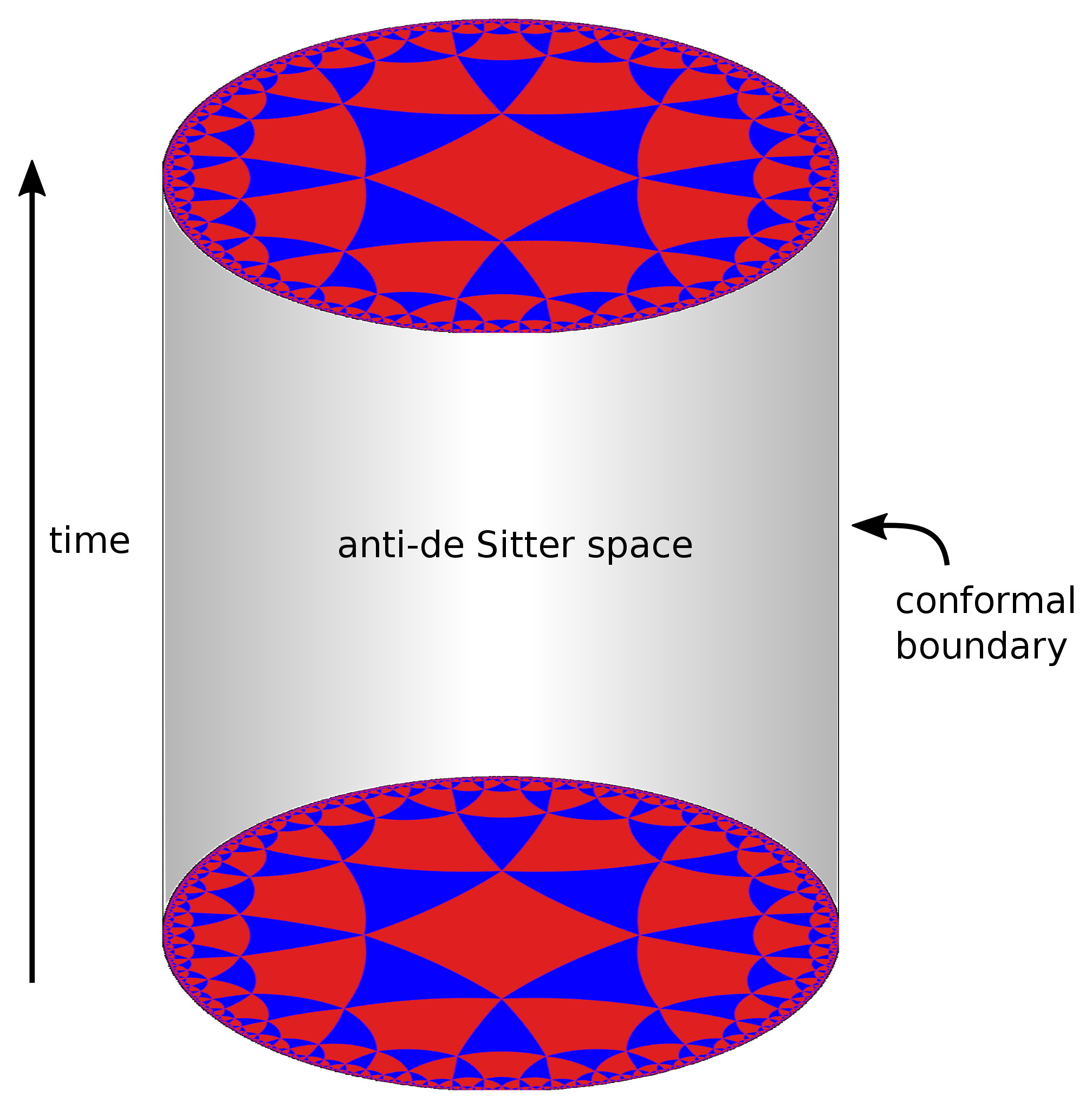
It would make sense to think that “ER” might be equal to, or the same as, “EPR” if there were some duality relationship between those two aspects of reality: wormholes and quantum entanglement. In fact, there might be good reason to think exactly that! In 2010, researcher Mark van Raamsdonk published an award-winning paper where he showed that if you took a Schwarzschild black hole, or a black hole made of mass alone with no electric charge or angular momentum, and added a negative cosmological constant to the spacetime it inhabited, you’d find that it would be dual to a pair of entangled conformal field theories: another application of the AdS/CFT correspondence.
If the ER = EPR conjecture is correct, it takes van Raamsdonk’s work a step further, and enables entanglement between two black holes via connection through a wormhole. Susskind, in a follow-up 2016 paper, extended the ER = EPR conjecture even further, stating,
“If we believe in the ambitious form of ER = EPR, this implies the presence of an Einstein–Rosen bridge connecting the superposed wave packets for a single particle.”
In other words, perhaps that ER = EPR is true, and that quantum entanglement itself is the true property that determines the geometry of space, time, and gravitation, and perhaps even their emergence itself.

But is this actually true, and are there actual wormholes linking entangled pairs of particles?
One challenge comes from the demand that “physical wormholes” must exist, and must be traversable in some sense: at least, to information, if not to physical transport itself. Whether or not wormholes can physically exist or not is a question that’s still hotly debated. We believe that the black holes that exist within our Universe are simply black holes; there is no evidence that they are wormholes. If you want to build a wormhole that information can pass through, or traversable, you would need to inject “negative energy” into the system.
Now, negative energy doesn’t exist in reality, except in the sense that there are quantum fluctuations in the Universe, and “negative” fluctuations are just as likely as positive ones. The problem is that these fluctuations obey the same quantum uncertainty relations as everything else, and cannot maintain themselves coherently over long distances or long timescales. There are lots of pieces of evidence that point toward physical wormholes not being exactly relevant for the events that occur in our Universe. However, that “real” wormhole may not be necessary for quantum entanglement; simply establishing a connection that allows quantum information to be transported, communicated, or even teleported through it may be enough.
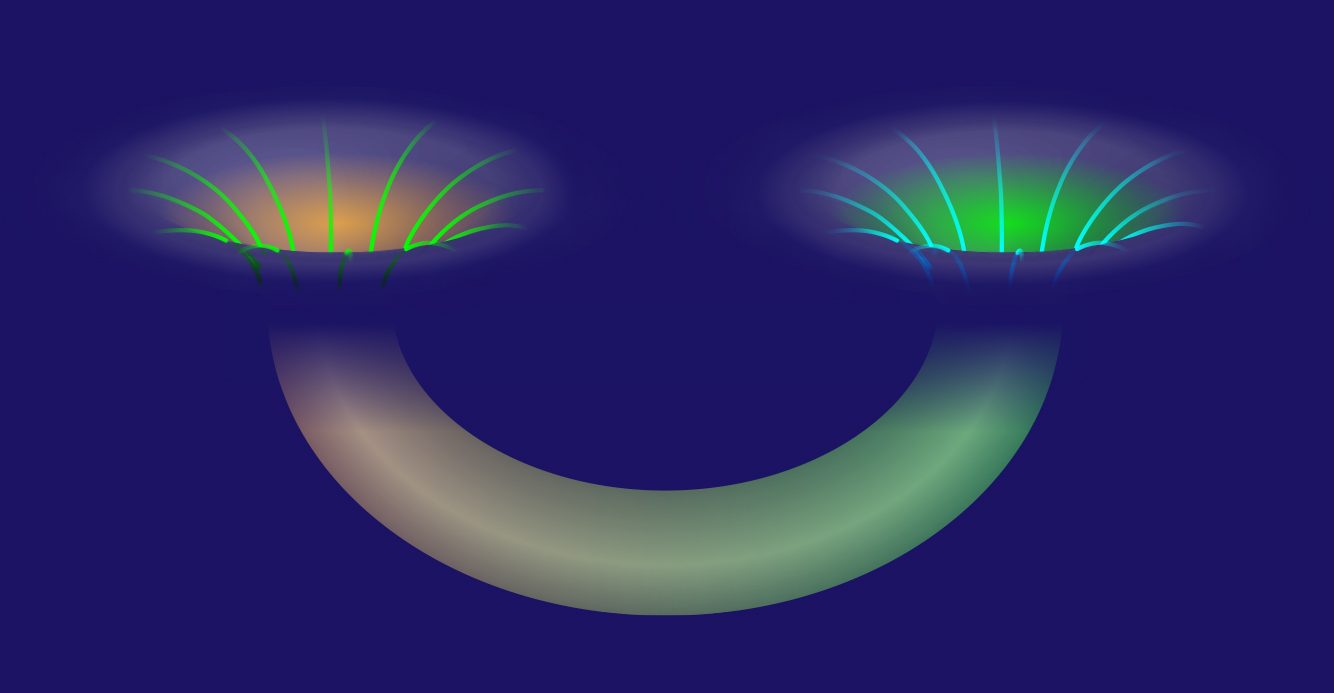
The conjecture ER = EPR was originally proposed to resolve a theoretical paradox involving black holes, and it contended that entangled particles both outside and inside the black hole’s event horizon were connected by wormholes. One can imagine that when two particles interact and become entangled in the first place, the entanglement itself is what generates this wormhole connecting them.
But this leads one to wonder: what happens to this wormhole when the entanglement becomes broken?
- Does the wormhole simply get severed, disappearing entirely?
- Does it “close off,” becoming non-traversable to information whereas it was previously traversable?
- Does it disconnect between the two original quanta, but reconnect between the next quanta that interacted with it?
- Or does the wormhole remain, and remain in the same state, but there’s simply no meaningful information that can pass through it any longer?
If you want to know the answers to these questions, you’ll be in good company, as nobody yet knows whether the ER = EPR conjecture is even true in any sense. It’s simply a hypothesis that was originally invented to resolve a paradox related to black holes, but if it’s true, it has far-reaching implications. These implications include:
- that any quantum entanglement between two black holes creates a wormhole between them,
- that wormholes necessarily result wherever different quantum systems are mutually entangled,
- and that traversable wormholes always have an equivalent physical description as a form of quantum teleportation.
This last aspect is what was recently, and very dubiously, tested on a quantum computer, but whether the ER = EPR conjecture is true for our actual, physical Universe is still a completely open question!
Send in your Ask Ethan questions to startswithabang at gmail dot com!
